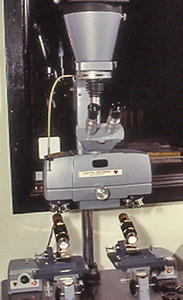- 01: Introduction
- 02: History
- 03: Propellants, Firearms, and Ammunition Development
- 04: Modern Firearms Manufacture
- 05: Small Arms Ammunition
- 06: Evidence Handling Procedures
- 07: Equipment and Instrumentation
- Introduction
- Objectives
- AFTE Knowledge and Ability Factors
- Measurement, Standards, and Accuracy
- Weight, Force, and Their Measurement
- Dimensional Data and Measurement Tools
- Muzzle Velocity of Bullets
- Stereo and Comparison Microscopes
- Small Tools and Supplies
- Imaging Equipment
- Field Support Equipment
- Computer-Based Technologies
- Firing Facilities
- Selected Bibliography
- 08: Examination of Firearms
- 09: Cartridge and Shotshell Examination
- 10: Characterization and Evaluation of Fired Projectiles
- 11: Bullet Comparison and Identification
- 12: Gunshot Residue and Distance Determination
- 13: Toolmark Identification
- 14: Communicating Results
- Resources


Imaging Equipment
Home > Equipment and Instrumentation > Imaging Equipment
There are various approaches to documenting identifications. Imaging is generally the preferred method, replacing sketching and narrative format. These methods continue to be used because it is not always possible to obtain meaningful images of what is observed through a microscope lens due to mutilation, deformation, varying depth of field, reflections, etc. Some type of identification documentation is considered essential by the forensic firearms discipline.
Film Imaging

An American Optical comparison
microscope with incandescent
lighting and 4x5 format press camera
Early comparison microscopes often included large format cameras mounted on the same stand. These old cameras used fine grained black and white cut films as well as photographic plates to create photomicrographs.
Later, 35 mm film cameras with adapters came into use on comparison microscopes, especially on those with trinocular heads. These allowed mounting the camera without disturbing the view through the binocular eyepieces. Although a simpler procedure, it required bracketing the exposures to ensure the capture of an acceptable image. Images were not available until the film was developed.
By the 1950s, the Polaroid Land™ camera was available and provided forensic examiners with images that developed immediately. Although the film for these cameras was expensive, it was offset by the time saved in completing a case.




